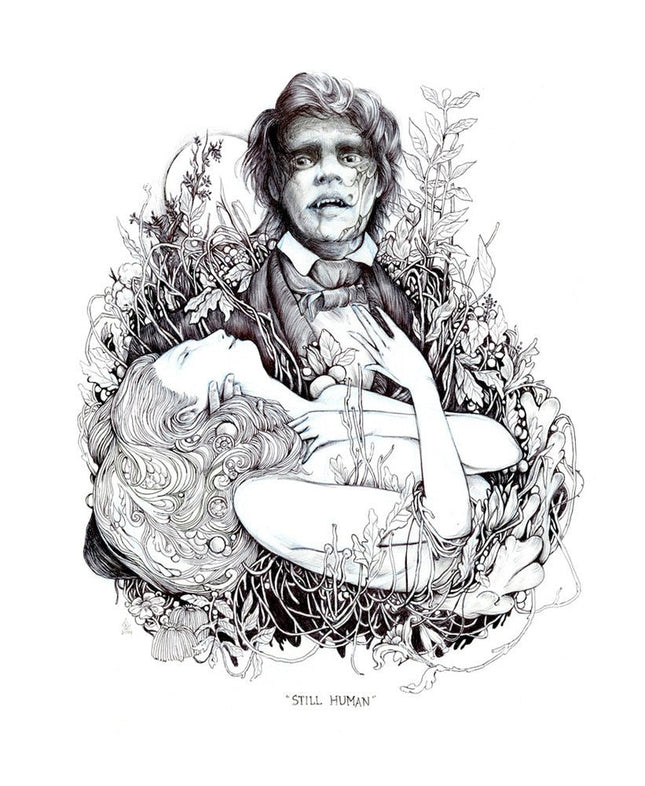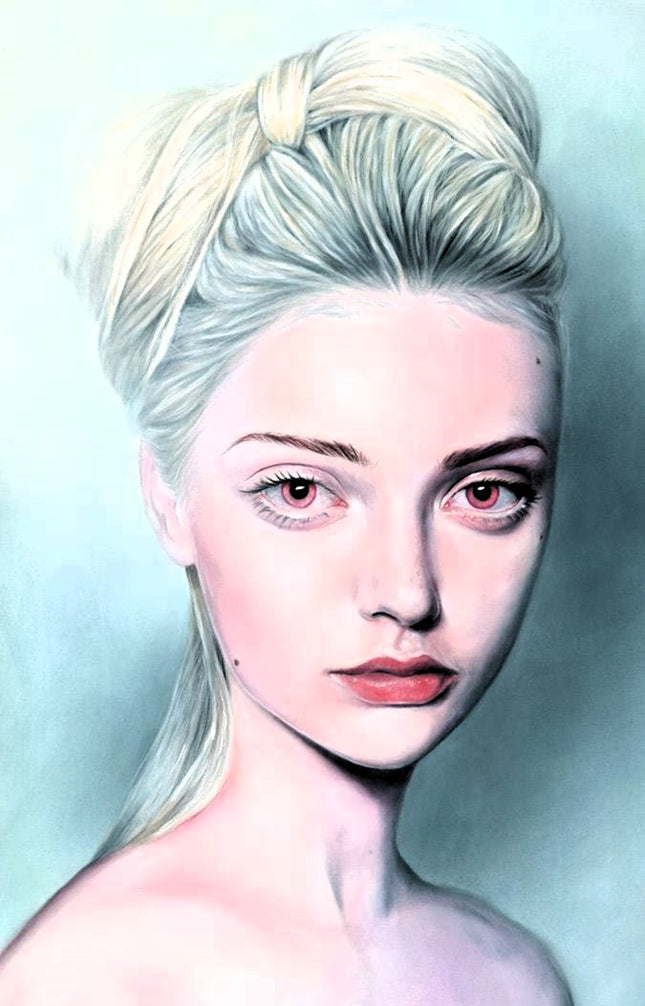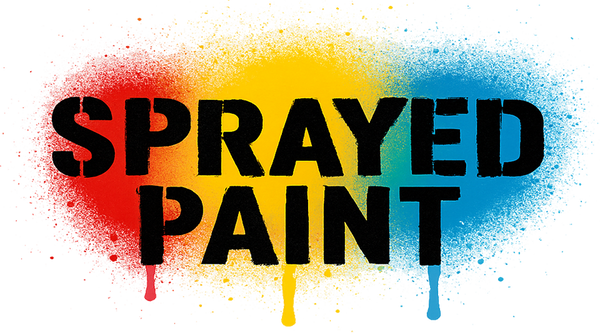
Flowers & Plants
-

Alex Kirzhner Still Human Giclee Print by Alex Kirzhner
Still Human Artwork Giclee Limited Edition Print on 300gsm Cold Press Watercolor Paper by Pop Culture Graffiti Artist Alex Kirzhner.
$217.00
-

Bec Winnel Tyler Giclee Print by Bec Winnel
Tyler Giclee Print by Bec Winnel Artwork Limited Edition Print on Fine Art Paper Graffiti Pop Street Artist. 2014 Signed & Numbered Limited Edition of 25 Artwork Size 10.5x16 Blue/White Haired Young Woman Close Up on Face. Reflective Intimacy in "Tyler" by Bec Winnel The "Tyler" giclee print by Bec Winnel, a celebrated Australian artist, is a striking testament to the confluence of Street Pop Art and portraiture on fine art paper. This 2014 signed and numbered limited edition of 25, sized at 10.5x16 inches, offers a mesmerizing close-up of a young woman with blue and white hair. This subject blends contemporary aesthetics with classic finesse. Winnel's work, particularly the "Tyler" print, diverges from the common perceptions of Street Pop Art and Graffiti Artwork, often associated with bold lines and vibrant colors splashed across public spaces. Instead, Winnel brings the essence of this movement into a more nuanced realm, where the subtlety of expression and the depth of gaze speak volumes. The subject's blue and white hair, often seen as a symbol of individuality in modern pop culture, contrasts with her timeless facial features, creating a piece that transcends eras and styles. The choice of giclee printing allows for an extraordinary level of detail, capturing the soft transitions of tone and the delicate textures that characterize Winnel's style. This method of art is synonymous with the highest quality in today's printmaking technology, much like the precision required in creating impactful street art. The limited availability of "Tyler" further emphasizes its value, echoing the often transient nature of street art that, once created, may only exist briefly before it is transformed or erased. While Bec Winnel may not wield a spray can on an alley wall, her artwork like "Tyler" carries the spirit of Street Pop Art into personal spaces, proving that the essence of this genre can manifest beyond concrete and brick. Her work encapsulates the introspective humanity that street artists often seek to express through their public works. The limited edition "Tyler" bridges the gap between the public art typically associated with street and graffiti artists and the private, contemplative experience of engaging with fine art.
$211.00



